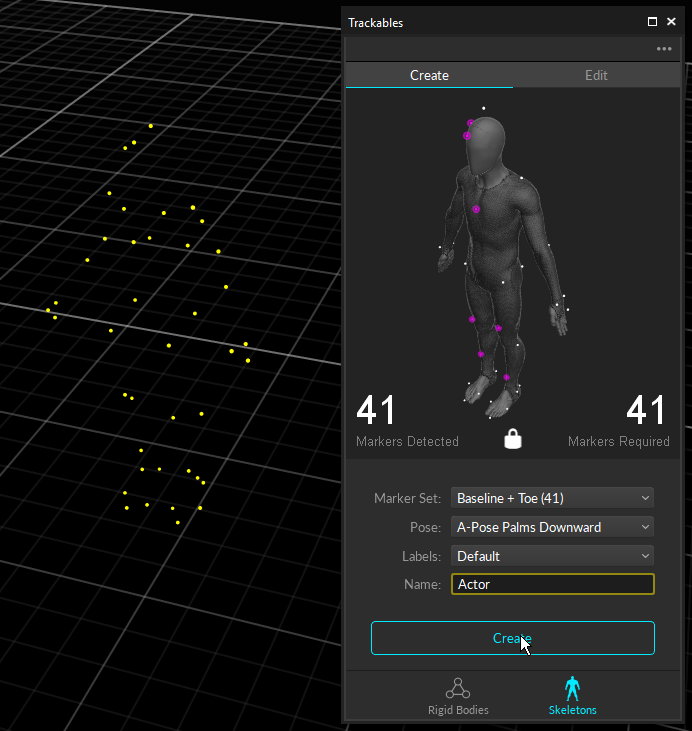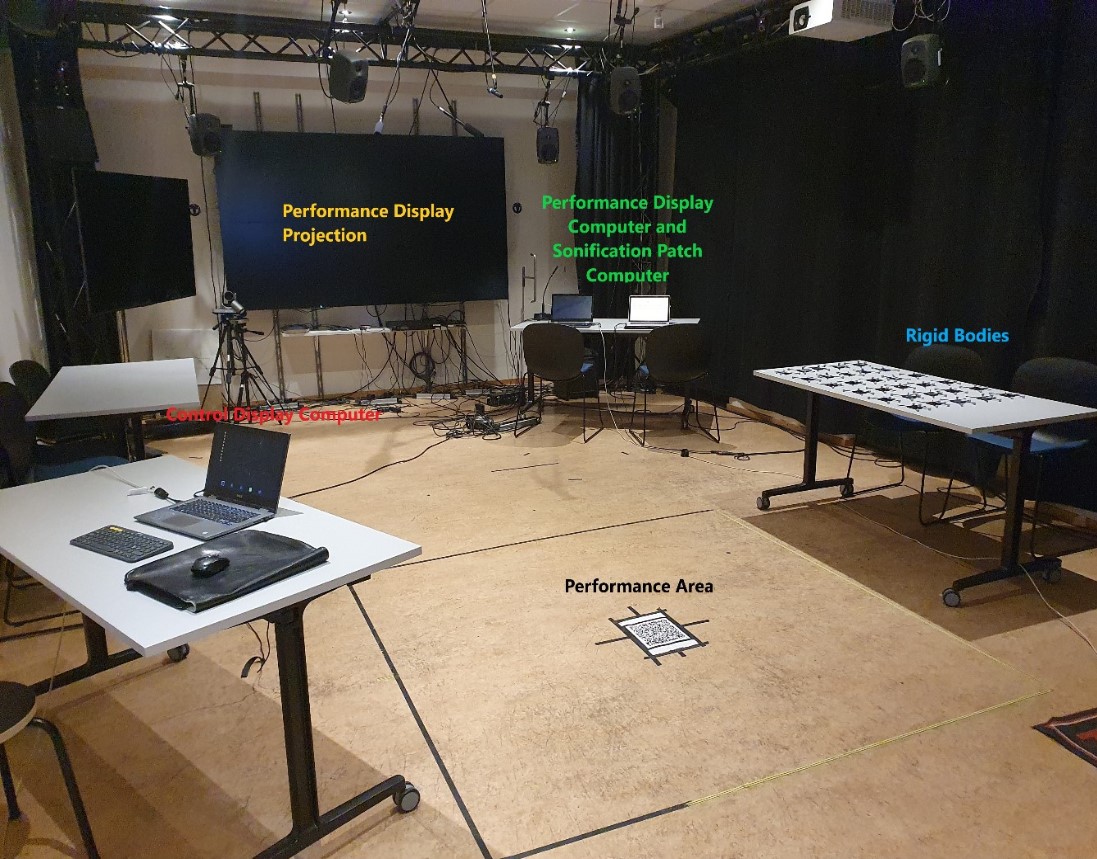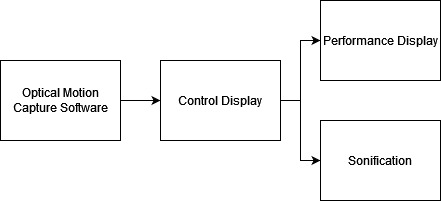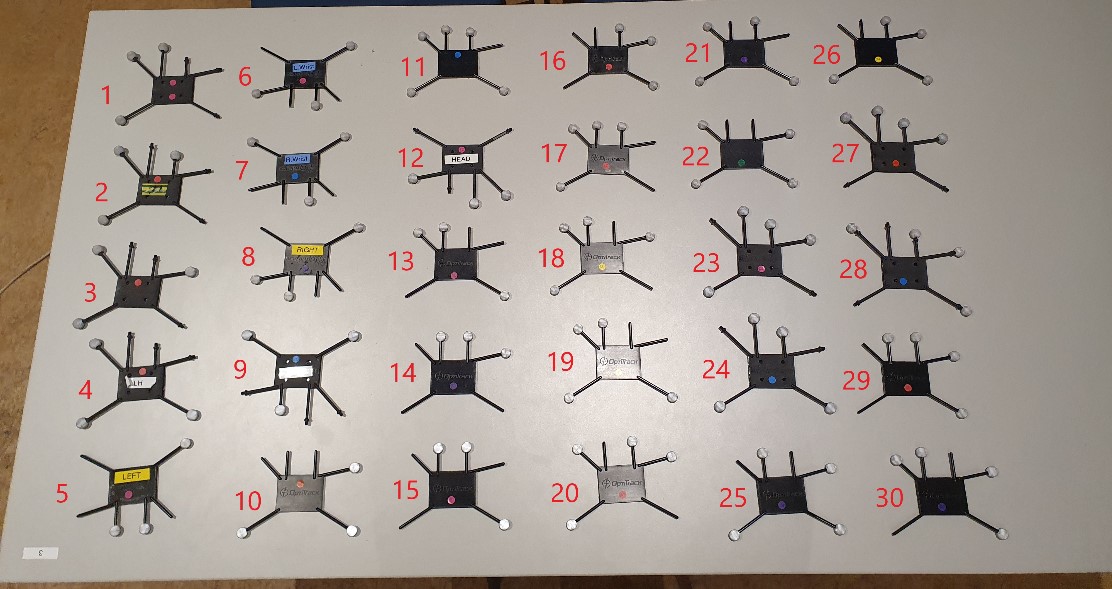Reconfigurations: Reconfiguring the Captured Body in Dance
Introduction
Optical motion tracking systems allow the body’s motion to be captured in precise detail in 3 dimensional space. These capture systems are used in many contexts, from analytical tools to performance capture for films and games and use a marker based approach, with individual markers placed on the body forming the basis out of which skeletons or rigid bodies are constructed. The assumption is also that these markers remain in a fixed position on the body. However, there’s an interesting idea in this: when we capture the motion of a body with such a system we aren’t actually capturing the full body, just the points we decide to. In a live performance capture context, this means that a performer need only reveal as much of their body as they wish. They have control over the representation of their body and in addition, the capture anonymises them to an extent. The flip side of this, however, is that just looking at the points from a capture, the audience tends to assume that anything vaguely resembling a part of a human body is just a part of a body, and, at that, a body which tends towards the idealised body. If a capture is purely the upper body, for example, we assume that the rest of the body is still there.

Reconfigurations is an attempt to work with this idea and encourage performers to cooperate to build bodies together bigger than their own. Two performers perform motions in a performance space setting markers on their bodies where they wish and moving them around at will. A third performer configures and links these markers on a visual display to form shapes and bodies that are beyond what is possible to make with as a single person. Each body is also sonified with a different timbre. The position of the markers on the horizontal plane determines pitch and on the vertical axis amplitude.
The system is designed to work for two use cases; choreographed dance performance, in which the dancers plan out specific shapes, bodies, and sounds and transition between these with purpose, and an interactive installation to allow non-trained members of the public to explore the visual, kinaesthetic, and sonic space offered by the system.
System Design

The entire performance system is run over four components; the optical motion capture system that tracks the markers and passes on their position data, a control display that enables the third player to link the markers and assign them to shapes and bodies, and which passes this data onwards to the further two components, a performance display that visualises the results for the performers and audience, and a sonification patch. Data is passed between these components over OSC. A prototype system implemented these specifically to fit the specific space of the portal.


Optical Motion Capture System
The optical motion capture system used in the prototype system was OptiTrak Motive. Motive enables the live broadcast of position data, so fits the needs of the Reconfigurations system. In addition, instead of using basic markers, rigid bodies are employed in their place. This means that each broadcast position has a unique identifier, which helps in regards to marker dropout and occlusions.

Control Display and Performance Display
The control display and performance display show the positions of each rigid body as a single marker. The control display is interactive and used by the third performer in order to assign markers to bodies and shapes, enable and disable individual markers, and link the markers together visually. The performance display mirrors the control display without any of the visual information required for interaction. This is displayed on a screen visible both to the audience and the performers.
Sonification
There are five bodies available to the performers, each with their own timbre and characteristic. Each enabled marker in the body drives a sound generator with the pitch determined by the position of the marker on the horizontal plane and the amplitude determined by the position on the vertical axis. However, there are two different pitch mappings, one for the choreographed dance use case and one for the interactive installation use case.
The first case maps several bodies markers to a continuous frequency range, enabling microtonal playing, and several to the 12-tone equal temperament chromatic scale. This is to ensure that the majority of spatial configurations result in dissonance, allowing the choreography to shift into consonances with purpose.
The second case maps the markers for every body to the minor pentatonic scale. This is to enable the untrained users of the interactive music system to work purely in consonances so that no choreography has to be planned.
Performance with the Prototype System

Below are two videos of a performance combining both use cases. Joachim and Joseph performed as dancers, with Hugh controlling the configuration. Two performances took place, with each performance being semi-planned out. The sonification version used was the pentatonic version for the second use case.
For performance 1, four rigid bodies were used, one placed on each of Joseph and Joachim’s hands. Conceptually, the idea was to play with the quadrilateral configured by the positions of their hands, exanding this outwards into 3 dimensional projections of a tetrahedron and unmooring points from the main body.
For performance 2, 12 rigid bodies were used. These were attached to the head, left shoulder, elbow, hand, hip, and knee of Joachim and head, right shoulder, elbow, hand, hip, and knee of Joseph. Conceptually, the performers were exploring the idea of creating a whole body out of their two halves, seeing how this allows that body to move in ways that neither Joseph or Joachim could achieve alone. As the performance continues, this body slowly becomes reconfigured, shifting towards more abstract shapes and representations.
